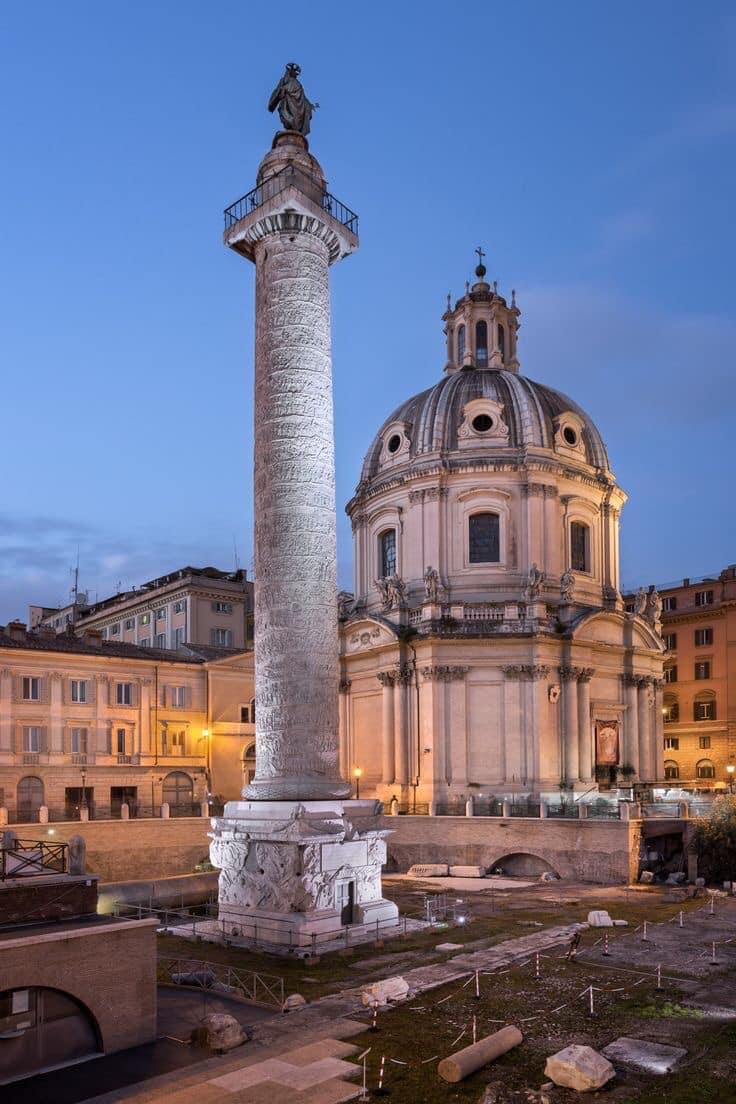Trajan’s Column (Italian: Colonna Traiana, Latin: Columna Traiani) is a triumphal column, a type of monument erected to celebrate military victories, located in Rome, Italy. It stands in Trajan’s Forum, north of the Roman Forum, and commemorates Roman emperor Trajan’s successful Dacian Wars (101–102 and 105–106 AD).
Construction and Design:
Built between 106 and 113 AD, possibly under the supervision of the architect Apollodorus of Damascus.
Made of 17 marble drums, each weighing around 30 tons, stacked on top of each other.
Stands at a height of 38 meters (125 feet) with the pedestal, which also served as Trajan’s tomb.
The column is topped by a statue of Trajan, which was replaced by a statue of Saint Peter in the 16th century.
The most distinctive feature of Trajan’s Column is its continuous frieze, a spiral bas relief that narrates the story of the Dacian Wars in chronological order, winding its way up the entire length of the column.
The frieze depicts scenes of battles, speeches, sacrifices, bridge constructions, and other events related to the wars.
It contains over 2,500 figures, including Roman soldiers, Dacian warriors, civilians, and deities.
The level of detail in the frieze is extraordinary, providing valuable insights into Roman military tactics, clothing, and everyday life.
Significance and Legacy:
Trajan’s Column is considered a masterpiece of Roman art and engineering.
The innovative use of the continuous spiral frieze to tell a story had a significant impact on later art forms, inspiring similar victory columns throughout history.
The column stands as a lasting testament to the power and glory of the Roman Empire during Trajan’s reign.
Today, it remains a popular tourist attraction and a valuable source of historical information.


Comment (0)